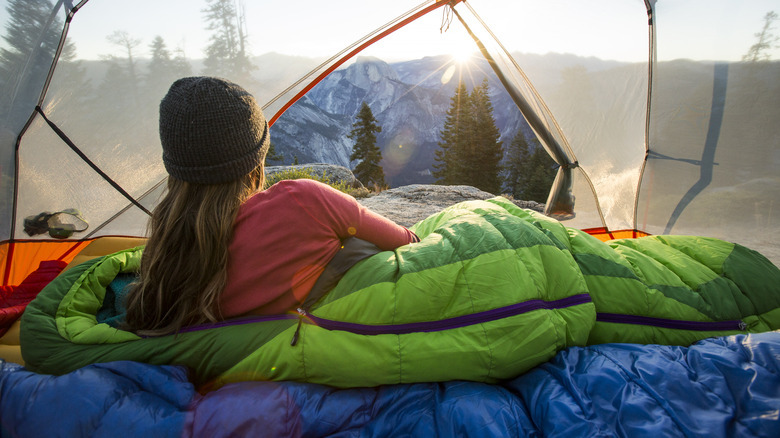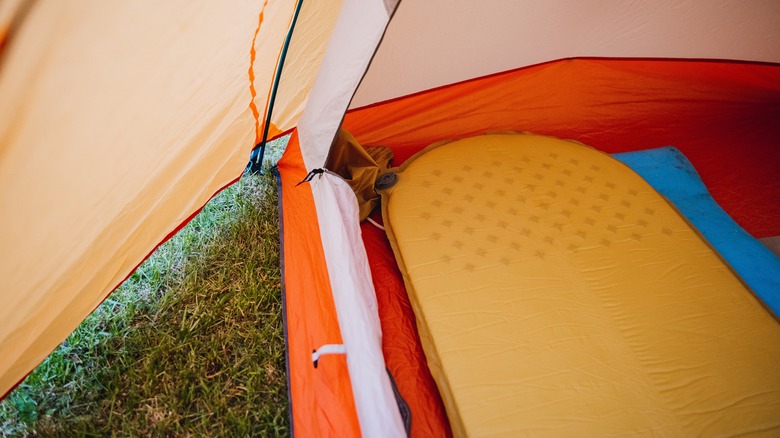Stay Warm While Sleeping During Your Fall Camping Trip With These Tips
Fall is a very popular season to spend time doing all sorts of things outdoors — including camping. While summer may statistically be when more people camp, many argue that fall is actually the best time to spend a night in the great outdoors. There are a myriad of reasons why: the fall foliage, smaller crowds, fewer mosquitos, etc. However, perhaps the most compelling reasons have something to do with the temperatures. After all, autumn seems to be that perfect blend of cool enough to be comfortable, but not too cold; warm enough to enjoy a variety of activities, but not oppressively hot.
To that end, the mild temperatures of fall make daytime excursions considerably pleasant. They also make sitting around the campfire in the evening much more enjoyable. However, after you've made your favorite fall campfire meal and get ready to settle down for the night, those pleasantly cool temperatures may begin to feel downright cold. A night spent shivering in your sleeping bag can put a damper on a trip to even some of the best fall camping destinations. Yet, while people spend time pondering what to wear on a fall hike in order to stay warm, they typically don't put as much forethought into their sleeping situation. However, you can stay warm while sleeping during your fall camping trip with these tips.
Heat loss is your enemy
Why, exactly, would the perfect fall evening suddenly feel frigid once you are laying in your tent? According to R.E.I., one of the major sources of heat loss is conduction. In other words, when your body is in contact with a surface that has a lower temperature, such as the ground, your body heat transfers to it. So, it only makes sense to stop this conduction. The best way to do that is to have a ground cloth, such as a tarp, and a sleeping pad. Most people think of sleeping pads only as a cushion, but they also provide insulation to help prevent the ground's chill from creeping in. Pillows will serve much the same purpose — providing cushion while preventing your head from contacting the cold ground.
The next step is to make sure you have the appropriately rated sleeping bag for the overnight temperatures. You can also make your sleep system more versatile by utilizing layers, much as you would as you dress for a cool weather excursion. A light sheet, blanket, or quilt used in conjunction with your sleeping bag can help you adjust to the temperatures.
Finally, give some thought to how you dress as your turn in for the night. Wearing a base layer and socks are a good start. You may also want to consider wearing a beanie to prevent heat loss through your head. Most importantly, however, make sure whatever clothing you are wearing is dry.

